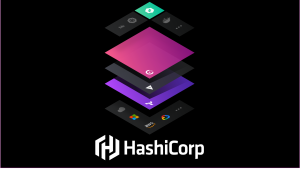NetApp Pursuing Hybrid Flash/Disk Storage Strategy for Maximum Customer Value
![]() With its recent announcement of Flash Accel, NetApp has put a major piece in its flash/disk hybrid storage strategy in place, says NetApp VP of Data Lifecycle Solutions Tim Russell. While this puts flash cache on the server, the key to NetApp’s strategy is in software and specifically storage management on the storage array, he told Wikibon’s David Vellante at the NetApp Customer Day event at VMworld 2012. It is there that the various components of the NetApp strategy Flash Accel on the server, Flash Cache on the array, and the underlying disk storage, are unified. And that software is the key to the efficiencies that NetApp delivers to its customers.
With its recent announcement of Flash Accel, NetApp has put a major piece in its flash/disk hybrid storage strategy in place, says NetApp VP of Data Lifecycle Solutions Tim Russell. While this puts flash cache on the server, the key to NetApp’s strategy is in software and specifically storage management on the storage array, he told Wikibon’s David Vellante at the NetApp Customer Day event at VMworld 2012. It is there that the various components of the NetApp strategy Flash Accel on the server, Flash Cache on the array, and the underlying disk storage, are unified. And that software is the key to the efficiencies that NetApp delivers to its customers.
The NetApp strategy is based on the insight that the relevant storage cost for very active transactional data is cost per IO, and performance is vital, so the right strategy for that data is to keep it as close to the application, on the server, in persistent flash storage. And highly virtualized environments demand higher performance from storage arrays as well, making flash a valuable addition there as well.
But cost-per-GB is the key cost measure for the vast majority of less active data in the enterprise. “If you look at how flash is deployed most efficiently, how do you control the cost of storage overall?” Russell asks. “By moving everything to flash? That is not likely in our lifetimes to be the lowest cost of storage.”
Therefore, the key is to deploy the right storage blocks with the most reads and writes to flash while “retaining all your bulk media as spinning media and running them together as one cohesive, integrated architecture.”
NetApp actually partners with several flash storage providers for the flash hardware layer. “The real innovation in Flash Accel is our software layer that delivers innovations in caching algorithms,” Russell says. This identifies the blocks that have changed “so we only have to populate and change those blocks rather than rewarming the whole cache. This gives us more consistent performance, more durability.”
If this sounds like block tracking that is part of backup systems, “that is where the technology comes from,” Russell admits. And the same technology is part of NetApp’s data backup approach as well. NetApp works with partners including Symantec, ComVault, and SincSource for DR and data backup and recovery as well. Its technology uses snapshots and other advanced technologies to provide a solution that Vellante says is among the best on the market.
“We can leverage all the richness of backup management from our backup vendor partners and combine that with the underlying storage efficiency that you get from snapshots, replicated snapshots, snapvaults,” Russell says. “All those things together are a perfect marriage.”
A message from John Furrier, co-founder of SiliconANGLE:
Your vote of support is important to us and it helps us keep the content FREE.
One click below supports our mission to provide free, deep, and relevant content.
Join our community on YouTube
Join the community that includes more than 15,000 #CubeAlumni experts, including Amazon.com CEO Andy Jassy, Dell Technologies founder and CEO Michael Dell, Intel CEO Pat Gelsinger, and many more luminaries and experts.
THANK YOU











